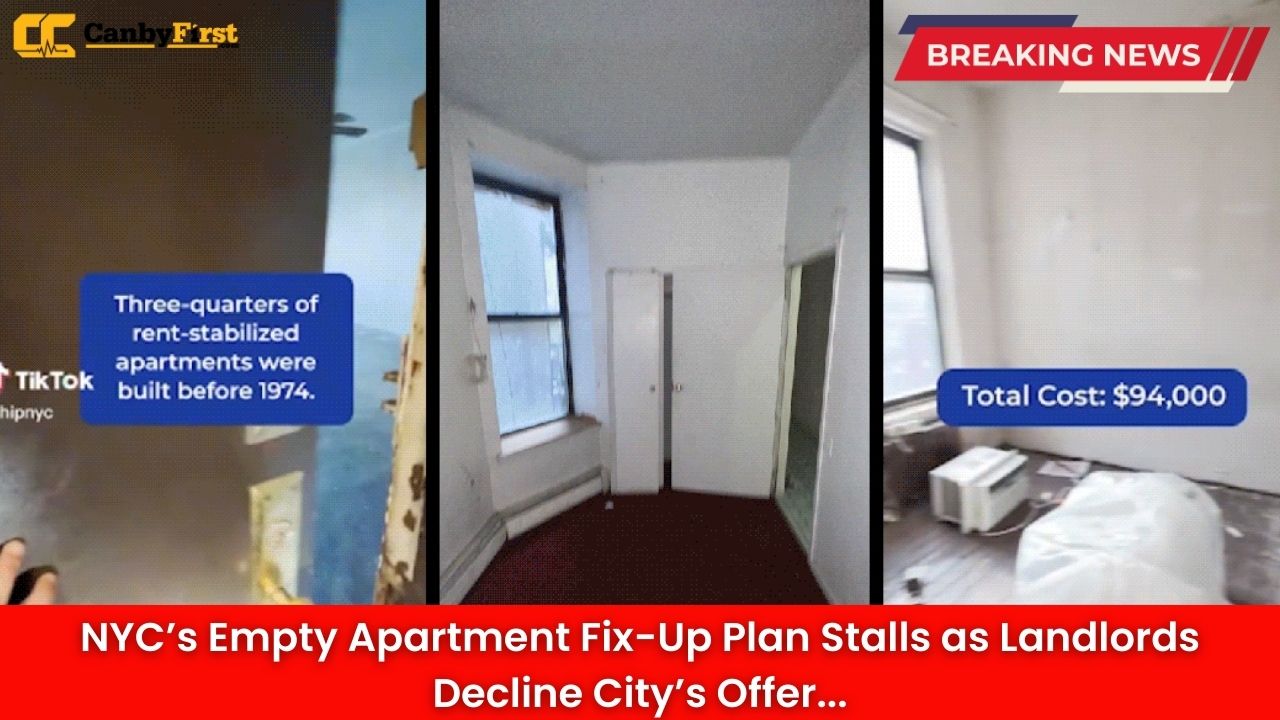New York, US: A program launched by New York City to bring thousands of empty apartments back into circulation has hit an unexpected roadblock: not a single landlord has agreed to participate.
The initiative, announced with fanfare earlier this year, promised to pay building owners to renovate vacant units so they could be leased to low-income tenants, helping address both New York’s shortage of affordable housing and its growing homelessness crisis. But months later, the city admits that not one lease or repair agreement has been signed.
The Plan That Went Nowhere
City officials allocated tens of millions of dollars to the project, designed to cover renovation costs for units sitting unused, many of which were rent-stabilized apartments in need of major repairs. In exchange, landlords would commit to renting these units to tenants with city-issued rental vouchers.
Also Read
On paper, it was a win-win: owners received funding to fix up idle apartments, and New Yorkers facing housing insecurity gained access to affordable homes. But in practice, landlords say the program’s rules are too strict, the funding too small, and the city too slow to pay.
Landlord Pushback
Owners have voiced frustration that the subsidies offered do not match the repair costs, which can run into the tens of thousands per unit. Several landlord groups also expressed distrust in the city’s rental voucher system, citing past delays in payments and bureaucratic hurdles.
“Landlords don’t want to be left holding the bag if the city is late with rent checks,” one housing advocate explained. “And with inflation driving up repair costs, many owners say the math just doesn’t work.”
A City in Crisis
The failure of the program underscores a painful reality: New York is in the grip of one of its worst affordability crises in decades. Vacancy rates for low-cost apartments are near zero, while roughly 60,000 people spend each night in the city’s shelter system. Families with children account for a significant portion of those experiencing homelessness, highlighting the urgency of the problem.
Despite this, more than 60,000 rent-stabilized apartments remain empty across the five boroughs, many in disrepair and considered financially unfeasible for landlords to bring back onto the market without assistance.
Officials Defend the Effort
City Hall maintains that the program was an honest attempt to bridge the gap, arguing that any large-scale initiative requires time to build trust and momentum. Housing officials say they remain open to adjusting the plan’s financial structure to make participation more appealing.
“We created this to help both landlords and tenants,” one agency spokesperson said. “The first version didn’t land, but we’re not walking away from the problem.”
Searching for Solutions
For tenant advocates, the program’s flop is another reminder that policy tweaks alone cannot fix systemic housing shortages. Some argue the city must push harder on building new affordable housing, while others urge reforming voucher programs to guarantee landlords faster, steadier payments.
Meanwhile, tenants in need remain caught in limbo, watching apartments stay locked up just as rents continue to skyrocket. Critics have warned that unless serious changes are made, the city risks deepening inequality and straining its already overwhelmed shelter system.
The Road Ahead
As empty units gather dust, the city faces mounting political pressure to rework the initiative or consider alternative approaches to ensure unused apartments don’t sit idle while thousands of residents search for homes. For now, one of New York’s headline solutions to its housing crisis has produced only headlines—and no results.












